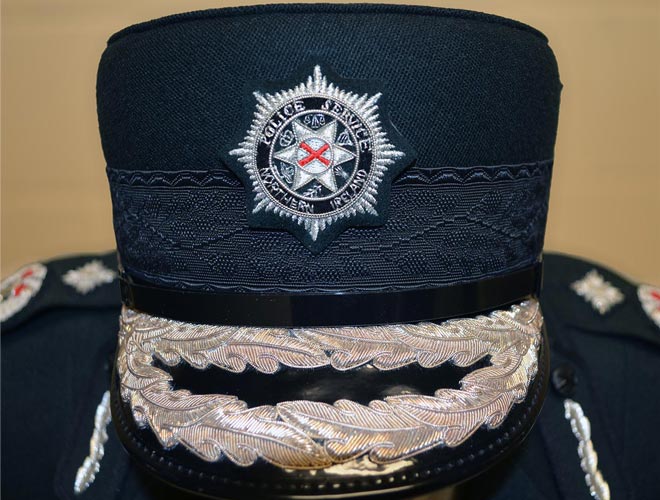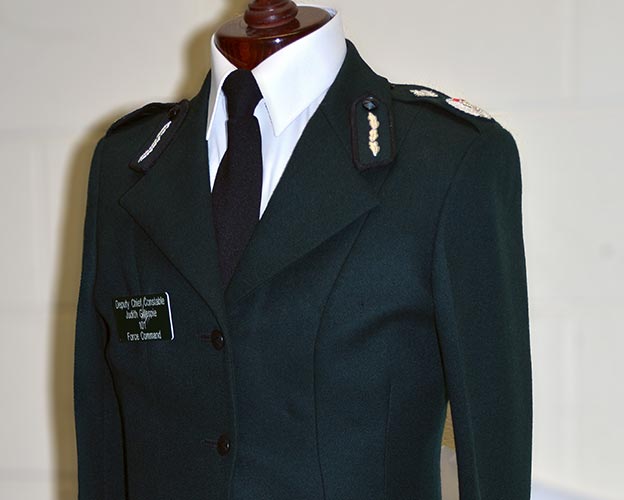Description
Cap and tunic belonging to Judith Gillespie, former deputy chief constable of the Police Service of Northern Ireland (PSNI). The review of the Royal Ulster Constabulary (RUC) conducted by the Independent Commission into Policing in Northern Ireland (ICP) reported on the role of women in the police force. The ICP found that only 12.6% of RUC members were women, that a third of female officers were in the part-time reserve and that few womern were promoted to middle and senior ranks. In their conclusions, the commission recommended “that a much higher proportion of female officers would enhance the effectiveness of policing”.
The Sex Discrimination (Northern Ireland) Order 1976 allowed women constables, sergeants and inspectors to became more integrated into the main police force, however female chief inspectors, superintendents and chief superintendents continued to be restricted to departments. In 1989, Kate Carlisle became the first woman deputy sub-divisional commander, then sub-divisional commander in 1992. In 2004, Judith Gillespie became assistant chief constable, the first woman to be appointed to a chief officer role. In June 2009, Gillespie was promoted to deputy chief constable becoming the second most senior police officer in the PSNI. Ms Gillespie retired from her post in March 2014.
In 2015, less than 30% of PSNI officers were female, there were no women on the PSNI's top command team and only two female chief superintendents. Although these figures are partly a legacy of the low intake levels in the 1980s and early 1990s, the Northern Ireland Policing Board has made the issue of female recruitment a priority. In 2015, the PSNI launched a recruitment campaign aimed at women, however, many female applicants failed the fitness test and only a fifth of the intake progessed through to training.
Links
- Related objects > NI Equality Commission press release
- Related objects > List of ICP meetings
- CAIN: Patten report 1999
- Belfast Telegraph: Judith Gillespie interview
- Belfast Telegraph: Top women concerned at lack of female police officers
- Belfast Live: PSNI launch new recruitment drive aimed at women
- PSNI recruitment



